Eggplant Home Gardening Tips: Dreaming of plump, glossy eggplants gracing your dinner table, fresh from your own backyard? You’re not alone! For centuries, this versatile vegetable has been a staple in cuisines around the world, from the Mediterranean’s moussaka to Asia’s flavorful curries. But let’s be honest, growing eggplants can sometimes feel like a challenge, even for seasoned gardeners. They can be a bit finicky, demanding specific conditions to truly thrive.
That’s where this article comes in! I’m going to share some of my favorite DIY tricks and hacks that will transform your eggplant growing experience. Forget complicated techniques and expensive equipment. We’re talking simple, effective solutions that anyone can implement, regardless of their gardening experience.
Why do you need these Eggplant Home Gardening Tips? Because store-bought eggplants simply can’t compare to the taste and satisfaction of harvesting your own. Plus, knowing exactly where your food comes from and how it was grown is incredibly empowering. So, let’s dive in and unlock the secrets to a bountiful eggplant harvest! Get ready to roll up your sleeves and discover how to grow the most delicious eggplants you’ve ever tasted, right in your own backyard.
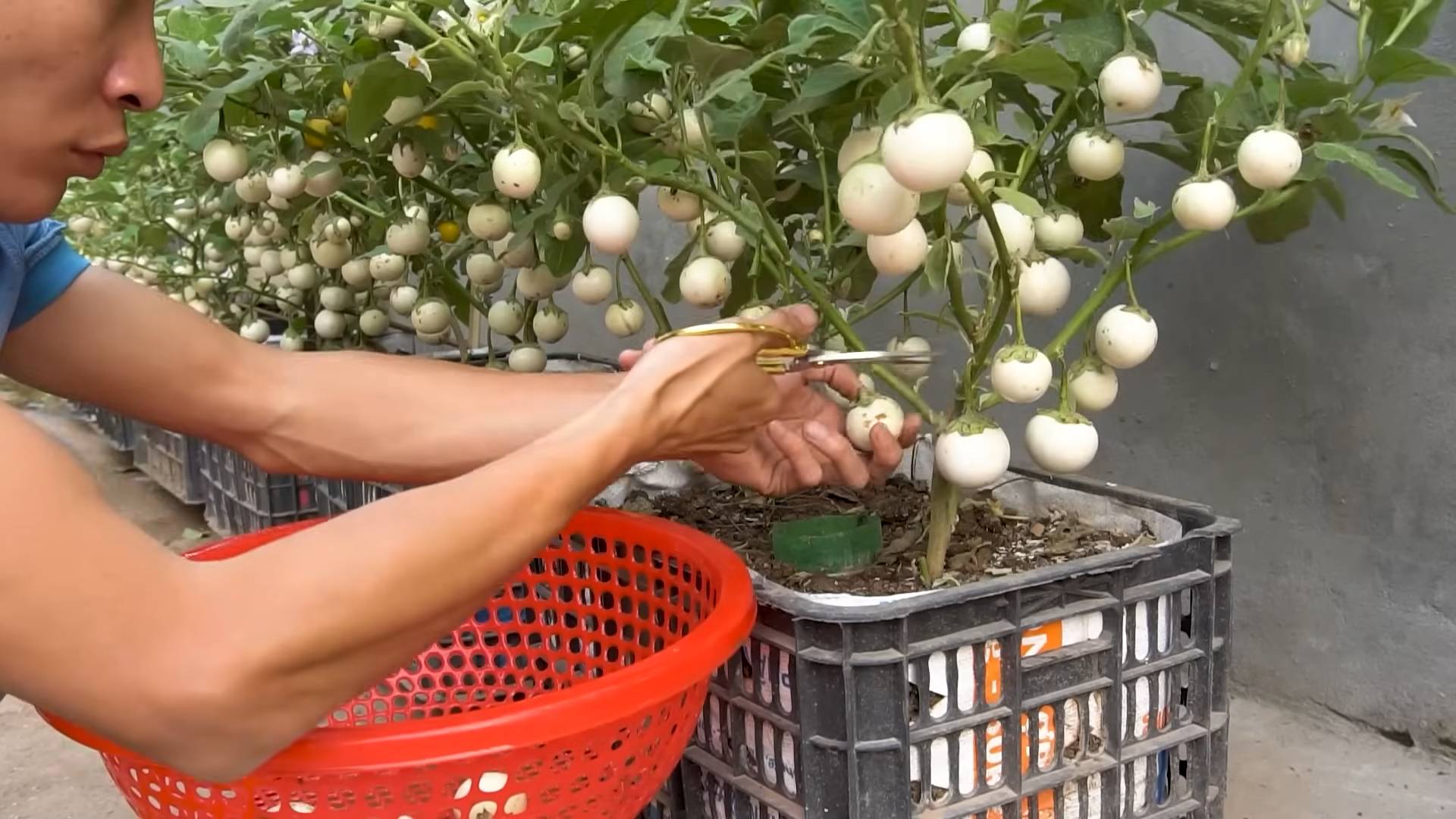
Growing Eggplant Like a Pro: My DIY Guide to a Bountiful Harvest
Okay, so you want to grow eggplants? Awesome! I’m here to tell you, it’s totally doable, even if you don’t have a sprawling farm. I’ve had some amazing success growing eggplants in my backyard, and I’m excited to share my secrets with you. This guide will walk you through everything from choosing the right variety to dealing with pesky pests. Let’s get started!
Choosing the Right Eggplant Variety
Before you even think about digging in the dirt, you need to pick the right eggplant variety for your climate and space. There are tons of options, each with its own unique characteristics. Here’s a quick rundown of some popular choices:
* Black Beauty: This is a classic for a reason! It produces large, glossy, dark purple fruits and is relatively easy to grow. It’s a great choice for beginners.
* Ichiban: If you’re looking for something a little different, Ichiban eggplants are long and slender with a mild flavor. They’re also known for being early producers.
* Japanese Eggplant: Similar to Ichiban, these are long and thin, but often have a slightly sweeter taste. They’re great for grilling and stir-fries.
* White Eggplant (Casper): Want to add some visual interest to your garden? White eggplants are a fun and unique option. They have a delicate flavor and creamy texture.
* Thai Eggplant: These small, round eggplants are common in Thai cuisine. They come in various colors, including green, purple, and white. They have a slightly bitter taste and are often used in curries.
* Fairy Tale: These are beautiful, small, and striped eggplants. They are early producers and great for containers.
Consider your local climate and the amount of space you have when making your decision. Some varieties are more heat-tolerant than others, and some are better suited for container gardening.
Getting Started: Planting Your Eggplant
Now that you’ve chosen your variety, it’s time to get your hands dirty! Eggplants need a long growing season, so starting them indoors is usually the best way to go, especially if you live in a cooler climate.
1. Start Seeds Indoors (6-8 weeks before the last frost): I usually start my seeds indoors around February or March. Fill seed trays or small pots with a good quality seed-starting mix. Sow the seeds about ¼ inch deep and water gently. Keep the soil consistently moist but not soggy.
2. Provide Warmth and Light: Eggplants need warmth to germinate. I use a heat mat under my seed trays to keep the soil temperature around 80-85°F (27-29°C). Once the seedlings emerge, they need plenty of light. If you don’t have a sunny window, use a grow light. I keep my grow light on for about 14-16 hours a day.
3. Transplant Seedlings: Once the seedlings have developed a few sets of true leaves (usually after about 6-8 weeks), they’re ready to be transplanted into larger pots. Gently remove the seedlings from their seed trays and transplant them into 4-inch pots filled with potting mix.
4. Harden Off Seedlings: Before planting your seedlings outdoors, you need to “harden them off.” This means gradually exposing them to outdoor conditions over a period of about a week. Start by placing them outside in a sheltered spot for a few hours each day, gradually increasing the amount of time they spend outdoors. This will help them acclimate to the sun, wind, and temperature changes.
Planting in the Garden
Once the danger of frost has passed and the soil has warmed up, it’s time to plant your eggplant seedlings in the garden.
1. Choose a Sunny Location: Eggplants need at least 6-8 hours of sunlight per day. Choose a location in your garden that gets plenty of sun.
2. Prepare the Soil: Eggplants prefer well-drained soil that is rich in organic matter. Before planting, amend the soil with compost or well-rotted manure. This will improve drainage and provide essential nutrients.
3. Planting: Dig holes that are slightly larger than the root balls of your seedlings. Gently remove the seedlings from their pots and place them in the holes. Space the plants about 2-3 feet apart. Backfill the holes with soil and water thoroughly.
4. Mulch: Apply a layer of mulch around the plants to help retain moisture, suppress weeds, and regulate soil temperature. I like to use straw or shredded leaves.
5. Staking: Eggplant plants can get quite heavy with fruit, so it’s a good idea to stake them to provide support. Use bamboo stakes or tomato cages to support the plants as they grow.
Caring for Your Eggplants
Now that your eggplants are planted, it’s important to provide them with the care they need to thrive.
1. Watering: Eggplants need consistent moisture, especially during hot weather. Water deeply and regularly, especially when the top inch of soil feels dry. Avoid overhead watering, as this can lead to fungal diseases. Drip irrigation is a great option for watering eggplants.
2. Fertilizing: Eggplants are heavy feeders, so they need regular fertilization. I like to use a balanced fertilizer (like 10-10-10) every few weeks. You can also use organic fertilizers like compost tea or fish emulsion.
3. Pruning: Pruning eggplants can help improve air circulation and encourage fruit production. Remove any suckers (small shoots that grow from the base of the plant) and any yellowing or diseased leaves.
4. Pest Control: Eggplants are susceptible to a variety of pests, including flea beetles, aphids, and tomato hornworms. Inspect your plants regularly for signs of pests and take action promptly. I like to use organic pest control methods, such as insecticidal soap or neem oil. You can also handpick pests off the plants.
5. Weed Control: Keep the area around your eggplants free of weeds. Weeds compete with eggplants for water and nutrients. Hand-pull weeds or use a hoe to remove them.
Dealing with Common Eggplant Problems
Even with the best care, you might encounter some problems when growing eggplants. Here are some common issues and how to deal with them:
* Flea Beetles: These tiny beetles can chew holes in the leaves of your eggplants. Cover young plants with row covers to protect them from flea beetles. You can also use insecticidal soap or neem oil to control them.
* Aphids: These small, sap-sucking insects can weaken your plants. Spray aphids with a strong stream of water or use insecticidal soap.
* Tomato Hornworms: These large caterpillars can quickly defoliate your eggplants. Handpick them off the plants or use Bacillus thuringiensis (Bt), a natural insecticide.
* Blossom-End Rot: This condition causes the bottom of the eggplant to rot. It’s usually caused by calcium deficiency or inconsistent watering. Make sure your soil is rich in calcium and water your plants regularly.
* Verticillium Wilt: This fungal disease can cause the leaves to wilt and turn yellow. There is no cure for verticillium wilt, so it’s important to prevent it by planting disease-resistant varieties and practicing good sanitation.
Harvesting Your Eggplants
The moment you’ve been waiting for! Harvesting your eggplants is the most rewarding part of the process.
1. Timing: Eggplants are usually ready to harvest about 60-80 days after transplanting. The exact timing will depend on the variety.
2. Ripeness: Eggplants should be firm and glossy when they’re ripe. The skin should be smooth and unblemished. Gently press the eggplant with your finger. If it feels slightly soft, it’s ready to harvest.
3. Harvesting: Use a sharp knife or pruning shears to cut the eggplant from the plant. Leave about an inch of stem attached to the fruit.
4. Storage: Eggplants can be stored in the refrigerator for up to a week. Wrap them in plastic wrap to prevent them from drying out.
Enjoying Your Harvest
Now that you’ve harvested your eggplants, it’s time to enjoy them! There are endless ways to cook and eat eggplants. Here are a few of my favorite recipes:
* Grilled Eggplant: Slice the eggplant into ½-inch thick rounds. Brush with olive oil, salt, and pepper. Grill over medium heat for about 5-7 minutes per side, or until tender.
* Eggplant Parmesan: Slice the eggplant into ¼-inch thick rounds. Dip in egg and breadcrumbs. Fry in olive oil until golden brown. Layer with tomato sauce and mozzarella cheese. Bake in the oven at 350°F (175°C) for about 30 minutes
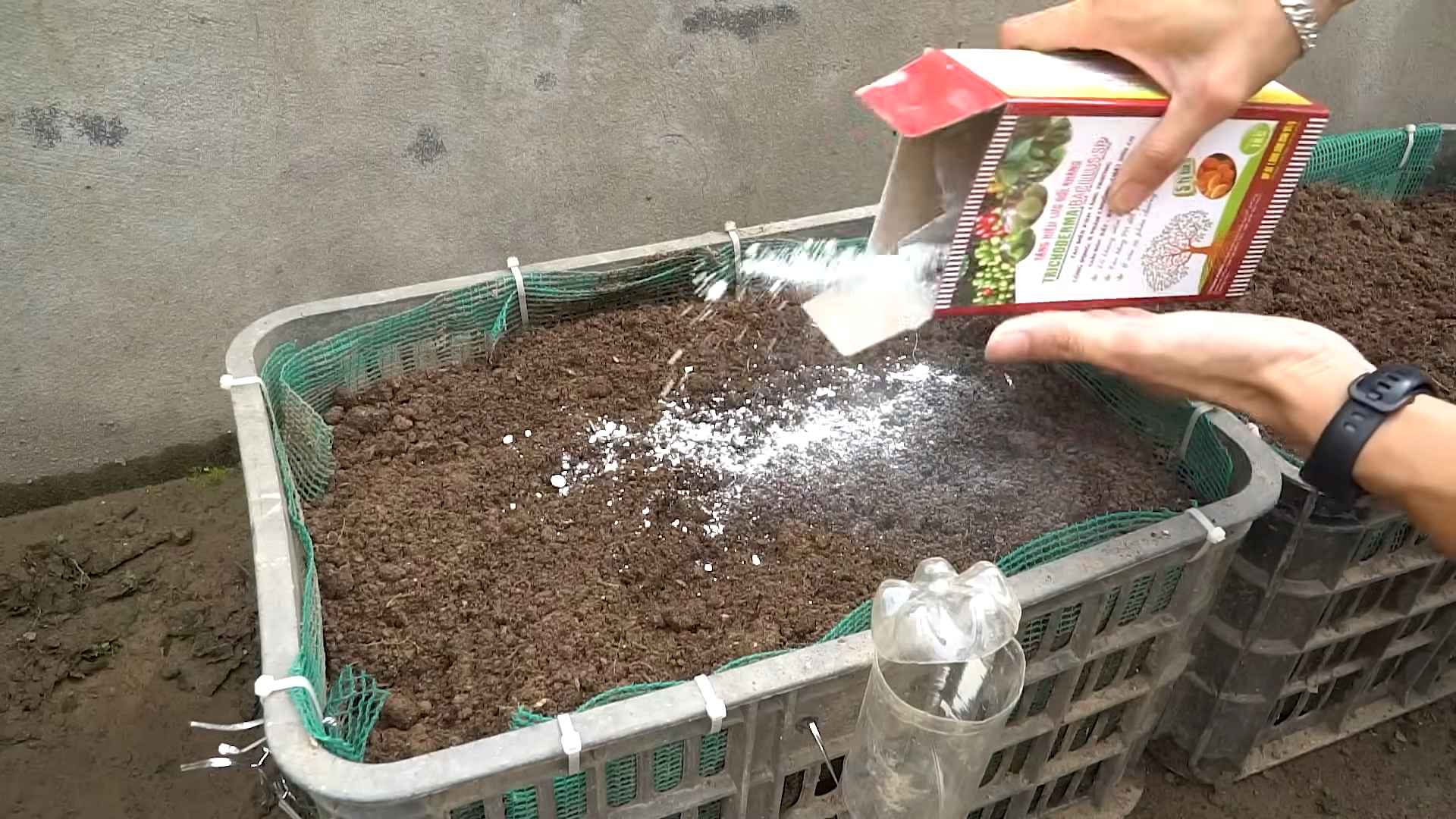
Conclusion
So, there you have it! Mastering eggplant home gardening isn’t some unattainable dream reserved for seasoned horticulturalists. With a little know-how and these simple, yet effective DIY tricks, you can transform your garden into a thriving eggplant paradise. We’ve covered everything from seed starting and soil preparation to pest control and harvesting, all with an emphasis on natural and budget-friendly methods.
Why is this a must-try? Because growing your own eggplants offers a multitude of benefits. Firstly, you get to enjoy the freshest, most flavorful eggplants imaginable, bursting with nutrients and free from harmful pesticides. Secondly, it’s incredibly rewarding to nurture a plant from seed to harvest, witnessing the miracle of nature unfold before your eyes. And thirdly, you’ll save money compared to buying eggplants at the grocery store, especially if you’re a frequent eggplant consumer.
But the beauty of eggplant home gardening lies in its adaptability. Feel free to experiment with different eggplant varieties. Try growing classic globe eggplants, slender Japanese eggplants, or even the vibrant Thai green eggplants. Each variety offers a unique flavor and texture, adding diversity to your culinary creations.
Consider companion planting to further enhance your eggplant’s growth and deter pests. Basil, marigolds, and thyme are excellent companions for eggplants, attracting beneficial insects and repelling harmful ones. You can also explore different mulching techniques to conserve moisture and suppress weeds. Straw, wood chips, or even shredded leaves can work wonders.
Don’t be afraid to get your hands dirty and embrace the learning process. Gardening is all about experimentation and discovery. You might encounter challenges along the way, but don’t let them discourage you. Every mistake is an opportunity to learn and improve your gardening skills.
We are confident that these DIY eggplant home gardening tips will empower you to grow your own delicious and healthy eggplants. So, grab your gardening gloves, gather your supplies, and get ready to embark on an exciting gardening adventure.
Now, we want to hear from you! Have you tried any of these DIY tricks? What are your favorite eggplant varieties to grow? What challenges have you faced, and how did you overcome them? Share your experiences, tips, and photos in the comments below. Let’s create a community of eggplant enthusiasts and learn from each other. Your insights could inspire and help other gardeners achieve their eggplant growing goals. Happy gardening!
Frequently Asked Questions (FAQ)
What is the best time to start eggplant seeds indoors?
The ideal time to start eggplant seeds indoors is typically 6-8 weeks before the last expected frost in your area. This allows the seedlings to develop a strong root system before being transplanted outdoors. Check your local frost dates to determine the appropriate timing for your region. Starting seeds indoors gives them a head start, especially in areas with shorter growing seasons.
What kind of soil is best for growing eggplants?
Eggplants thrive in well-drained, fertile soil that is rich in organic matter. The soil pH should be slightly acidic to neutral, ideally between 6.0 and 7.0. Amend your soil with compost, aged manure, or other organic materials to improve its drainage, fertility, and water-holding capacity. Avoid heavy clay soils, as they can become waterlogged and hinder root growth.
How often should I water my eggplants?
Eggplants need consistent moisture, especially during hot and dry weather. Water deeply and regularly, aiming to keep the soil consistently moist but not waterlogged. A good rule of thumb is to water when the top inch of soil feels dry to the touch. Mulching around the plants can help retain moisture and reduce the need for frequent watering. Avoid overhead watering, as it can increase the risk of fungal diseases.
What are some common pests that attack eggplants, and how can I control them?
Common eggplant pests include aphids, flea beetles, spider mites, and tomato hornworms. To control these pests naturally, you can use insecticidal soap, neem oil, or diatomaceous earth. Regularly inspect your plants for signs of infestation and take action promptly. Companion planting with basil or marigolds can also help deter pests. Handpicking larger pests like tomato hornworms is another effective method.
How do I know when my eggplants are ripe and ready to harvest?
Eggplants are typically ready to harvest when they are glossy, firm, and have reached their mature size and color. The skin should be smooth and unblemished. Gently press the skin with your thumb; if it leaves a slight indentation that springs back, the eggplant is ripe. Overripe eggplants will become dull, soft, and seedy. Use a sharp knife or pruning shears to cut the eggplant from the plant, leaving a short stem attached.
Can I grow eggplants in containers?
Yes, eggplants can be successfully grown in containers, provided you choose a large enough pot (at least 5 gallons) and use a well-draining potting mix. Container-grown eggplants may require more frequent watering and fertilization than those grown in the ground. Choose a sunny location for your container garden and provide support for the plants as they grow.
How much sunlight do eggplants need?
Eggplants require at least 6-8 hours of direct sunlight per day to thrive. Choose a sunny location in your garden where the plants will receive ample sunlight throughout the growing season. Insufficient sunlight can result in stunted growth, reduced fruit production, and poor fruit quality.
What are some good companion plants for eggplants?
Good companion plants for eggplants include basil, marigolds, thyme, oregano, and peppers. Basil helps repel pests like aphids and whiteflies, while marigolds deter nematodes and other soil-borne pests. Thyme and oregano attract beneficial insects that prey on harmful pests. Peppers can provide shade and support for eggplants. Avoid planting eggplants near fennel, as it can inhibit their growth.
How can I prevent blossom end rot in my eggplants?
Blossom end rot is a common problem in eggplants, caused by a calcium deficiency in the developing fruit. To prevent blossom end rot, ensure that your soil is rich in calcium and that your plants receive consistent watering. You can also add calcium supplements to the soil or spray the plants with a calcium solution. Avoid over-fertilizing with nitrogen, as it can interfere with calcium uptake.
How do I store harvested eggplants?
Store harvested eggplants in a cool, dry place, such as the refrigerator crisper drawer. They will typically last for about a week. Avoid storing eggplants near ethylene-producing fruits like apples and bananas, as this can cause them to ripen and spoil more quickly. Use eggplants as soon as possible for the best flavor and texture.


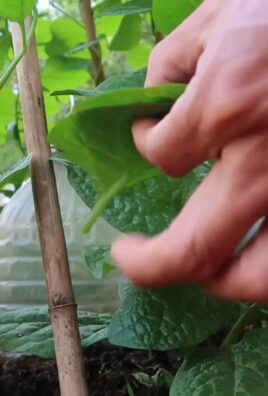
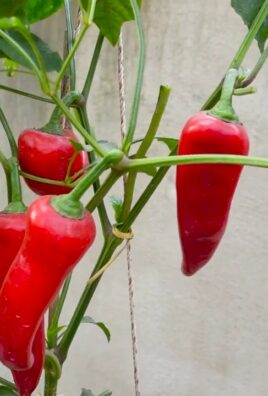
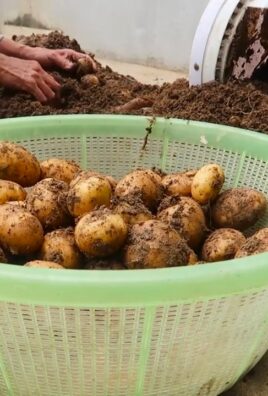
Leave a Comment